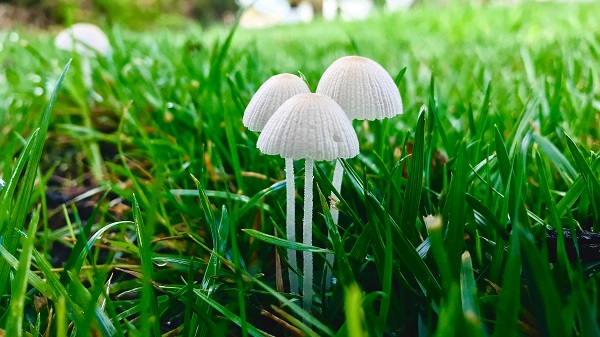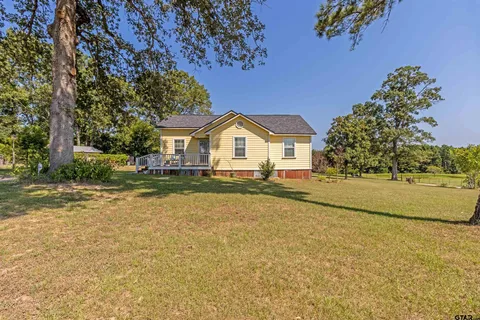Poisonous Lawn Mushroom Types You Need to Know

If you’ve noticed mushrooms sprouting in your yard, you’re not alone. While some fungi are harmless or even beneficial to your lawn’s ecosystem, others pose serious health risks to children, pets, and even adults. Identifying poisonous lawn mushroom types is essential for maintaining a safe outdoor space. Many toxic mushrooms look deceptively similar to edible varieties, making it dangerous to rely on appearance alone.
In this article, we’ll explore the most common and dangerous poisonous lawn mushroom types found in residential yards. You’ll learn how to identify them, understand their effects, and take steps to safely remove them. Whether you’re a homeowner, landscaper, or parent, this guide will give you the knowledge you need to spot potential threats and protect your loved ones.
Why Do Mushrooms Grow in Lawns?
Mushrooms typically grow in lawns due to:
- Decaying organic matter (e.g., tree roots, mulch, buried wood)
- Excess moisture or overwatering
- Poor lawn drainage
- Shaded areas with limited sunlight
While mushrooms are a natural part of soil health, their presence can become a concern when toxic varieties take root. Understanding the environment that promotes fungal growth is the first step to prevention.
Dangers of Poisonous Lawn Mushrooms
Not all mushrooms are harmful, but those that are can cause:
- Severe gastrointestinal distress
- Neurological symptoms
- Liver or kidney damage
- Death (in rare but documented cases)
Young children and pets are especially vulnerable, as they may unknowingly ingest mushrooms during outdoor play.
Top Poisonous Lawn Mushroom Types
1. Amanita phalloides (Death Cap)
Key Features:
- Pale green to yellow cap
- White gills and stem
- Bulbous base with a cup-like sac (volva)
Toxic Effects:
- Deadly if ingested
- Symptoms may delay for 6–12 hours
- Liver and kidney failure within days
Common Locations: Moist, shaded lawns near trees
2. Amanita muscaria (Fly Agaric)
Key Features:
- Bright red cap with white spots
- White stem and gills
- Large and umbrella-shaped
Toxic Effects:
- Hallucinations, nausea, vomiting
- Can be lethal in high quantities
Common Locations: Wooded yards, under conifers or birch trees
3. Galerina marginata (Deadly Galerina)
Key Features:
- Brown cap with darker center
- Thin stem with ring
- Rusty-brown spore print
Toxic Effects:
- Contains the same toxins as Death Cap
- Fatal liver damage possible
Common Locations: Decaying wood, mulch beds, shady lawns
4. Chlorophyllum molybdites (False Parasol)
Key Features:
- Large white cap with brown scales
- Greenish gills in mature stage
- Commonly mistaken for edible mushrooms
Toxic Effects:
- Severe stomach upset, vomiting, and diarrhea
- Non-lethal but highly distressing
Common Locations: Suburban lawns, parks, sports fields
5. Lepiota brunneoincarnata (Deadly Dapperling)
Key Features:
- Small white mushroom with brownish cap
- Gills do not touch the stem
- Fragile and often overlooked
Toxic Effects:
- Causes fatal liver damage
- Toxic even in small amounts
Common Locations: Grassy areas, lawns, gardens
6. Inocybe spp.
Key Features:
- Brown or tan with fibrous caps
- Unpleasant, musty odor
- Often grows in groups
Toxic Effects:
- Muscarine poisoning: sweating, salivation, breathing difficulties
- Risk of death in severe cases
Common Locations: Lawns under trees, mulched areas
How to Identify Poisonous Mushrooms in Your Lawn
Look for These Warning Signs:
- Bright or unusual colors (red, green, orange)
- Warts or scales on the cap
- White gills and spores
- Ring or skirt on the stem
- Bulbous base with a sac (volva)
- Strong or foul odor
Use a Mushroom Identification Guide
Having a field guide for mushroom identification or a reliable app can help you make informed decisions. However, when in doubt—always assume a mushroom is toxic.
What to Do If You Find Poisonous Mushrooms in Your Lawn
Step 1: Don’t Touch with Bare Hands
Wear gloves to avoid skin irritation or accidental ingestion from hand-to-mouth contact.
Step 2: Remove and Dispose Carefully
- Dig up the entire mushroom, including underground parts
- Seal it in a bag and discard in the trash (not compost)
Step 3: Reduce Conditions for Growth
- Improve lawn drainage
- Remove decaying wood or organic matter
- Increase sunlight exposure where possible
- Aerate the soil and reduce overwatering
What to Do If Ingestion Occurs
If a child or pet has possibly ingested a wild mushroom:
- Seek emergency medical attention immediately
- Do not induce vomiting unless instructed
- Collect a sample of the mushroom (if safe) for identification
Early treatment can save lives in cases of mushroom poisoning.
Are All Lawn Mushrooms Poisonous?
No, not all mushrooms in your lawn are poisonous. Some, like puffballs or ink caps, are harmless or even edible. However, many edible mushrooms have toxic look-alikes, making identification risky without expert knowledge.
To be safe:
- Do not consume any wild mushroom from your lawn
- Educate children and household members about the dangers
- Monitor pets closely during outdoor time
Tips for Preventing Poisonous Mushrooms in Your Yard
- Maintain lawn health with proper mowing, aeration, and fertilizing
- Avoid overwatering, especially in shaded areas
- Remove organic debris like stumps and wood chips
- Limit shady, damp areas where fungi thrive
- Inspect your lawn regularly, especially after rain
A healthy, well-maintained lawn is less likely to develop fungal growth.
Frequently Asked Questions (FAQs)
Are poisonous mushrooms more common in certain seasons?
Yes. Most toxic lawn mushrooms appear in late summer to early fall, especially after periods of heavy rain.
Can mushroom spores be harmful?
Mushroom spores themselves are typically not harmful when airborne, but handling or inhaling large quantities can cause respiratory irritation.
Should I hire a professional to remove mushrooms?
If your yard is heavily infested or if you’re unsure about identification, a professional landscaper or mycologist can help manage and remove fungal growth safely.
Conclusion
Identifying poisonous lawn mushroom types is vital for protecting your family and pets. While mushrooms may seem like a harmless natural growth, the risks associated with toxic varieties are very real. From deadly species like the Death Cap to stomach-turning imposters like the False Parasol, knowledge is your first line of defense.
Take time to inspect your yard regularly, educate those around you, and manage your lawn to reduce fungal growth. A safe and beautiful lawn starts with informed care.
Have you checked your yard for toxic mushrooms recently? Stay proactive and protect what matters most.




